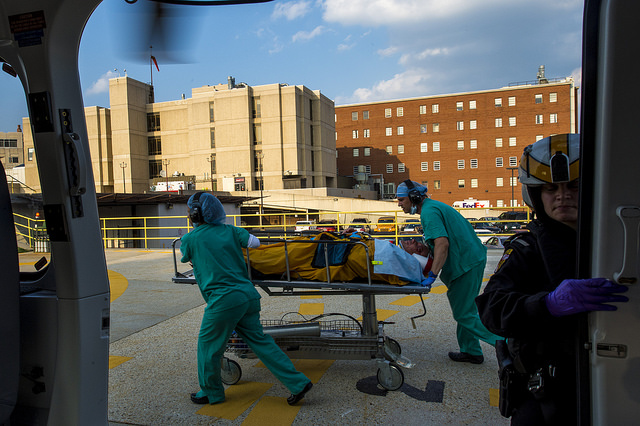On a Monday evening in June, I was sitting at home in my pajamas, relaxing, watching TV and talking trash on Facebook with family and friends, when I realized I was feeling a bit hot. So, I decided to turn on my air conditioner.
I grabbed my inhaler and went to rinse out my mouth but couldn’t, because all of a sudden I couldn’t breathe. Nor could I call 911 from my phone.
I tried to calm myself down by sitting. Didn’t work. So I ran downstairs to a staff member to tell her I was having a hard time breathing. She called 911 and the dispatcher told her to have me sit in a seat until the paramedics arrived.
If I didn’t know right, I would have thought that the fire department was just sitting out front, waiting for me to call them, because before I could relax to sit in my seat, they were there at the front door. They had me do a breathing technique that made me feel a lot better.
One of the paramedics asked if I still wanted to go to the Emergency Room. I told him “yes,” but that I needed to go back to my apartment so I could change out of my pajamas into some civilian clothes. He said, “OK.” As I returned back to my apartment and felt another attack of not being able to breathe again. So, I left, still in my pajamas, and headed towards the ER at Medstar Washington Hospital Center.
Once we arrived, I explained what was going on with me. I got X Rays done and some blood work. I was admitted into the hospital early Tuesday morning at 1:27 a.m. and told that I had a respiratory infection because I was doing a lot of wheezing in my chest. I knew I had this wheezing going on, but I had been assuming it was a “summer cold” due to the hot weather and going in and out of air conditioning. My diagnosis was way off.
While I was first lying in the hospital bed, I kept thinking about having a cigarette, despite all the IVs stuck up in my veins, breathing treatments, and daily regimen of high blood/cholesterol pills to antibiotics. I never got that master plan off the ground on how to get a smoke. All the treatments just exhausted me into a deep sleep. That was my experience for the first four days. Then the cigarettes stopped mattering so much.
After the third day being in the hospital and not thinking about a cigarette, I realized I can actually drink a cup of coffee without having the desire for a cigarette. It felt good. After I0 days in the hospital, I was released. And I haven’t had a cigarette since. When Street Sense went to press on August 7, I’d been smoke-free for 19 days!
It feels pretty good to be able to breathe again. Once I got home, I scrubbed my walls, the filters from the air conditioning, etc. What I really need at this point is a new apartment. Since I have stopped smoking, I can breathe again — but I’m eating up everything in sight because I’m scared to smoke after my ordeal.
Medstar Washington Hospital Center asked me a series of questions, like if I had any allergies, which I do, and whether I was taking medication for them. They said dust mites and other secondhand smoke etc., can actually set me off to have Chronic Obstructive Pulmonary Disease (COPD). So, I went to see my primary care doctor, who is going to treat me. I don’t need a pulmonary doctor just yet, thank God.
I thank God and the people of Washington, D.C., for providing homes to chronically homeless people so that they are able to recuperate once they have health issues and they can immediately get health care, before it’s too late. Homelessness isn’t, and shouldn’t, be an option.
Everyone that experiences homelessness — regardless of race, religion, mental illness, incarceration, or anything else — should be in a home.




